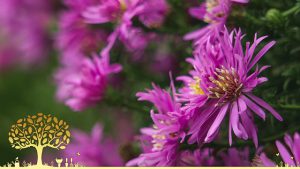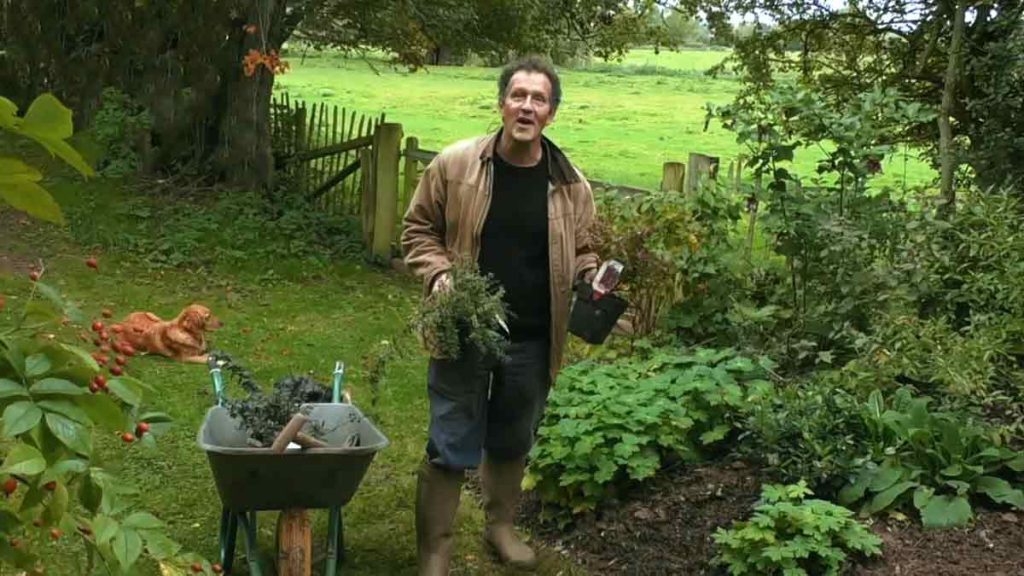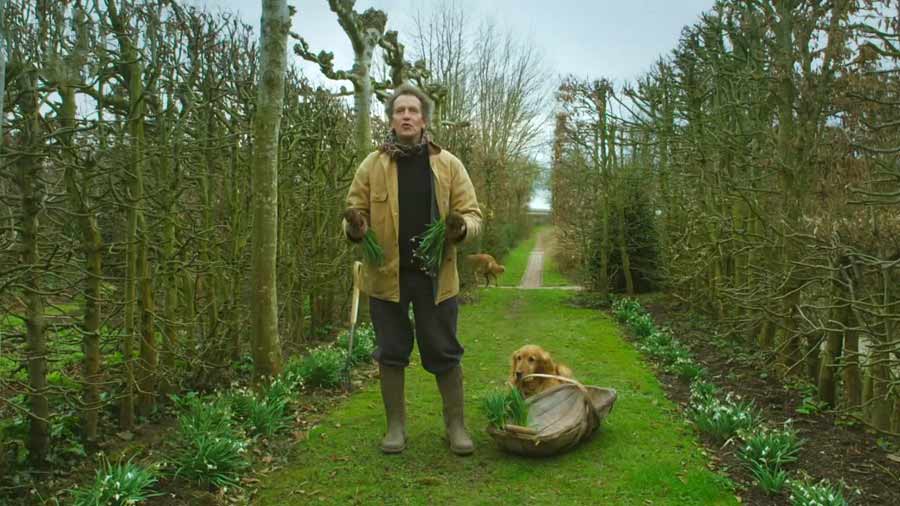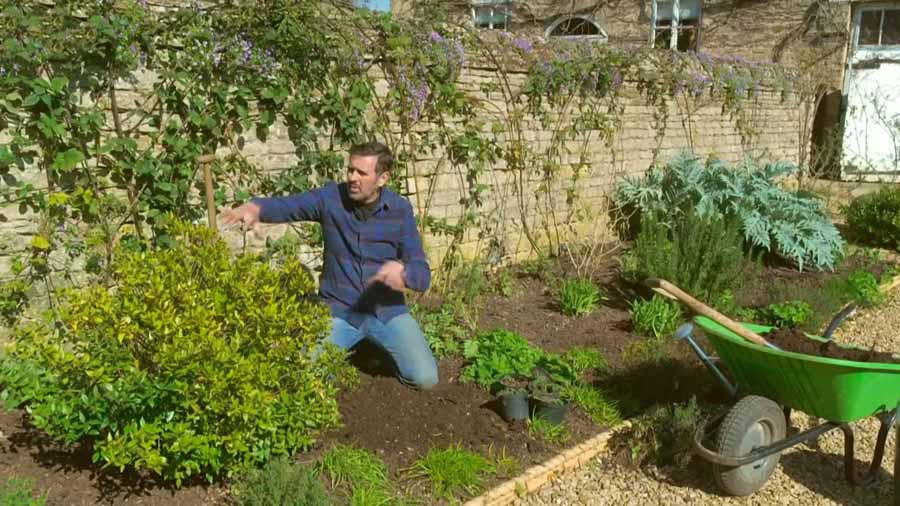Gardeners World episode 31 2020: At Longmeadow, Monty prepares his pond for the season ahead, prunes a climbing rose and celebrates the garden as it moves into autumn.
Adam Frost is in his garden, giving ideas and inspiration for a winter display of containers, and the show travels to Kent to visit Frances Tophill on her allotment to find out about her growing year. There is a second chance to enjoy an autumnal visit to Hidcote Gardens with Carol Klein, and the team meet a couple whose garden has been inspired by their travels in the Far East.
And the show joins viewers in their own gardens to find out about their gardens and their gardening tips.
Gardeners World episode 31 2020
How to grow quince
Large, yellow and aromatic, the fruit of the quince tree will ripen to perfection when grown in a sunny position. They are perfect for turning into jelly, jams or membrillo, a hard preserve eaten with cheese by the Spanish. It is a worthwhile addition to the fruit garden because it is easy to look after and not prone to many of the more common fruit problems.
Keep plants well watered during hot, dry summers. Spread a 7.5cm (3in) thick mulch around plants in spring and feed with 100g per sq m (3oz per square yard) of Growmore or other general fertiliser. In late winter feed plants in pots fortnightly with liquid general fertiliser.
Raise containers onto pot feet to allow excessive moisture to drain away. In winter remove dead, diseased or damaged stems, along with thinning out any congested or unproductive stems. Aim to maintain a system of well-spaced branches on a clear stem, removing wayward stems as they’re produced.
Harvesting
Fruit are ready to harvest in October or November when they have turned from a light yellow to a golden colour and are extremely aromatic. Only pick undamaged quinces, storing them in a cool, dry and dark place on shallow trays. Ensure they are not touching. Allow fruit to mature for six weeks before using – they will keep for up to three months.
Success with succulents in Gardeners World episode 31 2020
This plant group is extremely vast and diverse, from the very small and intricate to the striking and architectural. There is a cactus or succulent to suit everyone, whether young or old.
The common linking characteristic of cacti and succulents is the ability to store water in the leaves or stems enabling them to survive in arid habitats. All cacti are succulents, yet cacti are defined by the presence of areoles (specialised sites where spines form) whereas succulents have none.
The majority of cacti and succulents grow in desert and savannah situations with low moisture, dry air, bright sunshine, good drainage and high temperatures. However there are succulents such as Schlumbergera and Epiphyllum which grow as epiphytes in rainforests. These require semi-shade and humid conditions. So to cultivate cacti and succulents successfully it is best to research their native habitat, to provide their ideal growing conditions as far as possible.
Pruning and cleaning succulents
Pruning depends on the habit of the plant and is not often necessary. Propagation is a great way of tidying up an old plant, reducing the height of leggy specimens and thinning-out overcrowded pots.
Dust can build up on cacti and succulents and make them look unsightly. Keep on top of the dusting by using a soft paint brush or blusher brush to remove the dust from in and around the plant. A damp cloth also works really well on smooth succulents.
Sweet pea sowing
Discover how easy Lathyrus are to grow. Whether raising sweetly-scented annual sweet peas or cultivating perennial peas, this page will help you get started. When choosing between sweet peas and perennial Lathyrus, the main decision is whether or not scent is important to you. Then work out whether you’d prefer an annual or perennial. There are plenty of colour options too, as well as both climbing and more bushy types.
Tie new shoots of climbing plants to canes, pea sticks, netting, trellis or shoots of shrubs they will be growing up, using garden twine or sweet pea support rings. Tendrils in contact with supports will naturally begin to grip on but keep tying in new shoots if they are wayward or in danger of breaking.
Plants won’t flower so well if they dry out, so check those in the ground every 3-4 days in dry weather, and those in pots daily. Pour on enough water to wet the full depth of roots each time you water.
Pond care in Gardeners World episode 31 2020
Ponds are a lovely addition to any garden and can provide a rich habitat for a range of wildlife. However, without care ponds can soon become an eyesore with overgrown plants, weeds and water that is unhealthy for fish and other wildlife. Occasional cleaning and regular maintenance are required.
The best time to clean ponds is in late autumn when many creatures are less active. See our separate page for more on maintaining a wildlife pond. Below are some tips on general garden pond care:
Pond cleaning
Start by preparing a holding tank in a shady spot for fish and deep water plants; use some pond water in the tank, unless it is particularly cloudy. Marginal (water’s edge) plants will survive out of the pond as long as they are kept moist and shaded. The easiest way to drain the pond is to use a pump, which can be rented for the day from a machinery hire shop
As the water level falls, remove fish as they become visible. Remove plants as the water levels drops, placing them in the holding tank. Take the opportunity to re-pot or divide plants if necessary. If you find any, put larger pond creatures into the holding tanks. Place decaying plant material on the side of the pond, so any smaller creatures hidden away can return to the pond
Scoop up the silt from the base. You can use this on your border, but retain a little to add back to the pond as it will help re-establish tiny organisms.
Pruning climbing roses
Rose pruning ensures that plants grow vigorously and flower well each year. If left, climbing roses can become a tangled mess of branches with very few flowers. Although often considered complicated, rose pruning is not difficult if you follow this guide.

Climbers are routinely pruned in winter, after the flowers have faded, between December and February. Long whippy shoots can be shortened or tied in during autumn, to prevent strong winds from damaging them.
Renovation can be carried out at any time between late autumn and late winter. It is easier to see what you are doing when the rose is not in leaf, plus there is a better response from the rose, which should grow back vigorously the following spring.





Pingback: Gardeners World episode 32 2020 — HDclump — Gardeners’ World 2020